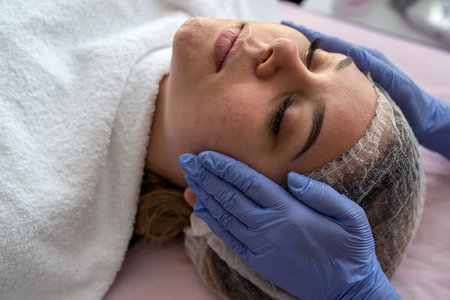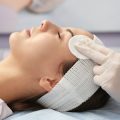Understanding Hyperpigmentation and Sun Damage in the UK
When it comes to skin concerns in the UK, hyperpigmentation and sun damage are often underestimated yet surprisingly prevalent. Unlike countries with consistently warm climates, Britain’s weather is famously unpredictable—think cloudy skies, sporadic sunshine, and those rare heatwaves that send everyone flocking to the parks. Despite this, British people are not immune to the effects of UV exposure. In fact, one of the unique challenges here is that many of us let our guard down, assuming our grey skies protect us. The reality is that UV rays penetrate clouds, and cumulative exposure over time can lead to pigmentation issues and premature ageing.
Culturally, there’s an interesting relationship with tanning in the UK. For decades, a sun-kissed glow has been associated with health and holidays abroad—a symbol of having escaped the drizzle for Mediterranean beaches. Yet this desire for bronzed skin sometimes translates into risky behaviour: skipping sunscreen on ‘not-so-sunny’ days or relying on sunbeds during winter months. These habits contribute not only to acute sunburn but also to deeper, lingering problems like uneven skin tone, melasma, and stubborn age spots.
What complicates matters further is the diversity of skin types across Britain’s population. From fair Celtic complexions that burn easily to richer tones more prone to post-inflammatory pigmentation, each brings its own set of challenges when it comes to both prevention and treatment. Many people struggle with pigmentation that feels resistant to standard topical solutions or find that over-the-counter products simply don’t deliver results.
Recognising these factors is crucial before we even begin talking about advanced treatments like microneedling. To truly address hyperpigmentation and sun damage in the UK, we must acknowledge both environmental influences—the climate and UV index—as well as the cultural attitudes surrounding sun care. This holistic understanding sets the stage for exploring why innovative interventions such as microneedling are gaining popularity among those seeking clearer, more radiant skin despite our famously moody weather.
What is Microneedling?
Microneedling, sometimes fondly referred to as “collagen induction therapy” by skincare professionals across the UK, is a minimally invasive treatment that has become increasingly popular in both clinics and home routines. This technique uses a device equipped with fine needles to create thousands of tiny punctures—often called “micro-channels”—on the skin’s surface. While it may sound a tad daunting at first, the process is actually quite gentle when performed by a trained practitioner or with the right at-home tool.
The science behind microneedling is elegantly simple yet effective. By creating these controlled micro-injuries, your skin’s natural healing response kicks in, stimulating the production of collagen and elastin—two proteins crucial for maintaining youthful, resilient skin. Over time, this boost in collagen helps to repair visible signs of sun damage and fade areas of hyperpigmentation, giving you a brighter, more even complexion.
| Feature | Professional Clinic Treatment | At-Home Routine |
|---|---|---|
| Needle Depth | Up to 2mm (for deeper treatment) | Usually 0.25mm – 0.5mm (gentler for safety) |
| Expertise Required | Qualified skincare professional | User-friendly devices, basic instructions needed |
| Treatment Frequency | Every 4-6 weeks | Once a week or as directed |
| Main Benefits | Deeper collagen stimulation, targeted pigmentation treatment | Improved skin texture and mild brightening over time |
This technology has truly caught on in the UK not just for its results, but also because it fits so seamlessly into modern British lifestyles. Whether you’re popping into a reputable London clinic for an advanced session or adding a gentle at-home roller into your evening routine while catching up on your favourite telly, microneedling offers flexible options suited to varying comfort levels and budgets. Its popularity continues to grow as more people seek effective solutions for stubborn sun damage and uneven skin tone without lengthy downtime or harsh chemicals.
![]()
3. Microneedling’s Impact on Hyperpigmentation and Sun Damage
Microneedling has carved out a remarkable niche within the realm of skin rejuvenation, particularly for those of us in the UK who are all too familiar with sun-induced pigmentation and the lingering effects of cloudy summers punctuated by rare bursts of intense sunlight. The science behind microneedling is rather fascinating: by creating controlled micro-injuries on the skin’s surface, this treatment triggers the body’s natural healing process, stimulating collagen and elastin production. This not only helps to smooth texture but also encourages the turnover of pigmented skin cells, resulting in a brighter, more even complexion.
UK-based research has been instrumental in validating these benefits. Dermatologists from institutions such as the British Association of Dermatologists have highlighted how microneedling can significantly reduce melanin clusters responsible for stubborn dark spots and post-inflammatory hyperpigmentation—issues that are unfortunately common among Britons exposed to intermittent yet potent UV rays. Expert consensus in Britain leans on microneedling’s ability to break up existing pigmentation while promoting the absorption of topical treatments like vitamin C serums or prescription creams, which are often recommended by local skin specialists for tackling sun damage.
What sets microneedling apart is its suitability across diverse skin tones and types found throughout the UK population. Whether you’re dealing with long-standing freckles from teenage sunbathing sessions on Brighton Beach or new patches of pigmentation after a summer garden party, many practitioners in London and beyond have observed that regular microneedling sessions can lead to visible improvements over time. The cumulative effect—based on both scientific studies and real-world testimonials—suggests that microneedling offers a promising solution for anyone seeking to restore clarity and radiance to sun-damaged British skin.
4. Personal Experiences and Aesthetic Results
One of the most compelling aspects of microneedling for hyperpigmentation and sun damage in the UK comes from the personal journeys shared by those who have undergone this treatment. British men and women, from sun-kissed Cornwall to cosmopolitan London, have increasingly turned to microneedling as a means of reviving their skin after years of unpredictable British weather or past tanning habits.
For instance, Sarah from Manchester recounts how her freckles and uneven patches—once charming but now troublesome—became less pronounced after three sessions spaced out over several months. She notes that the downtime was surprisingly minimal; she experienced mild redness akin to a day at Blackpool beach but found she could return to work with just a touch of concealer within 48 hours.
John, a keen golfer from Surrey, shares a similar tale. After decades on sunny courses, he noticed stubborn dark spots and fine lines cropping up. Following his GP’s advice, he opted for microneedling at his local clinic. He describes the process as “not painful, just odd—like being tickled by tiny hedgehogs.” His results? Noticeably smoother skin tone and a newfound confidence wearing lighter shirts without feeling self-conscious about his complexion.
Typical Recovery Timeline and Visual Improvements in the UK
| Treatment Session | Initial Reaction | Recovery Time | Notable Changes Observed |
|---|---|---|---|
| First Session | Mild redness, slight swelling | 24-48 hours | Softer skin texture, subtle glow |
| Second Session | Light flaking, reduced redness | 1-2 days | Diminished dark spots, more even tone |
| Third Session | Pinker complexion (brief) | Less than 24 hours | Significant fading of pigmentation and improved clarity |
Shared Aesthetic Outcomes and Reflections
The visual improvements are often described as “fresh-faced” or “naturally radiant”—terms commonly used by UK practitioners and clients alike. Many individuals appreciate that microneedling delivers gradual enhancement rather than overnight transformation, which fits well with British preferences for understated elegance. Shared feedback highlights fewer patchy areas, reduced visibility of sun damage, and smoother makeup application—a bonus for those navigating both office lighting and pub evenings.
This chorus of first-hand accounts confirms that microneedling is not just a clinical solution but also an aesthetic journey that fosters renewed self-assurance in everyday life across the UK.
5. Cultural Considerations and Professional Guidance in the UK
British beauty standards have long celebrated natural radiance, favouring subtle enhancements over dramatic transformations. When it comes to addressing hyperpigmentation and sun damage, there’s a distinctly pragmatic approach woven into everyday skincare habits across the UK. Many Britons are mindful of sun exposure—thanks in part to the country’s unpredictable weather—but still recognise the cumulative effects of even rare sunny days on their skin. This has contributed to a growing awareness of preventative care, with daily SPF use and gentle, non-invasive treatments like microneedling gaining popularity.
Within British culture, there’s also a strong emphasis on seeking professional advice before embarking on any advanced aesthetic treatment. The NHS and various health campaigns often encourage people to consult registered practitioners, especially for procedures that penetrate the skin barrier or involve complex aftercare. Choosing a practitioner who is properly registered with organisations such as the General Medical Council (GMC) or the British Association of Dermatologists (BAD) ensures that patients receive not only safe but also bespoke microneedling treatments tailored to their individual skin type and pigmentation concerns.
This professional guidance aligns closely with the British preference for understated yet effective results—minimising risk while maximising natural beauty. By consulting with qualified experts, individuals can confidently navigate their options for treating hyperpigmentation and sun damage, secure in the knowledge that their wellbeing is prioritised alongside aesthetic outcomes.
6. Aftercare and Long-Term Skin Health
Expert Tips for Post-Microneedling Recovery
The period after your microneedling session is crucial for maximising results and protecting your skin, especially here in the UK where our climate can be unpredictable. I always recommend keeping your skincare routine minimal and gentle for at least 48 hours post-treatment. Skip exfoliants, retinoids, and any harsh actives; instead, reach for a fragrance-free hydrating cleanser like CeraVe Hydrating Cleanser or the much-loved Simple Kind to Skin range.
Hydration: The British Way
Our often chilly winds and central heating can easily dry out freshly treated skin. I suggest layering lightweight moisturisers rich in ceramides or hyaluronic acid. La Roche-Posay Cicaplast Baume B5 is a local favourite, celebrated for its soothing and reparative properties. Apply it generously to lock in moisture and support the healing process.
Sun Protection: A Must-Have All Year Round
Even under grey skies, UV exposure remains a risk factor for post-procedure pigmentation. Daily SPF is non-negotiable. Opt for broad-spectrum sunscreens such as Boots Soltan Sensitive Face SPF50+ or Eucerin Sun Gel-Cream Oil Control SPF50—both are readily available on the high street and formulated for sensitive British complexions.
Adapting Your Routine with the Seasons
The UKs four seasons mean your skin’s needs will change throughout the year. In winter, bolster hydration with richer creams (like Aveeno Dermexa) and consider adding a humidifier to combat dryness from indoor heating. Come summer, switch to lighter gels and ramp up sun protection, reapplying every two hours if you’re outdoors enjoying a rare sunny day.
Local Product Recommendations
Many Brits trust brands like Liz Earle (the Skin Repair Light Cream is a delight), REN Clean Skincare, and The Ordinary for their no-nonsense approach and accessibility. These brands offer serums packed with antioxidants—vitamin C or niacinamide—to help maintain bright, even-toned skin long after microneedling treatment.
Your Skin’s Ongoing Journey
Ultimately, consistency is key. Scheduling regular check-ins with your skin therapist ensures any concerns are quickly addressed and treatments can be tailored to the ever-changing British environment. Embrace gentle care, stay vigilant with sun protection, and enjoy watching your skin thrive in all its renewed radiance—rain or shine.


